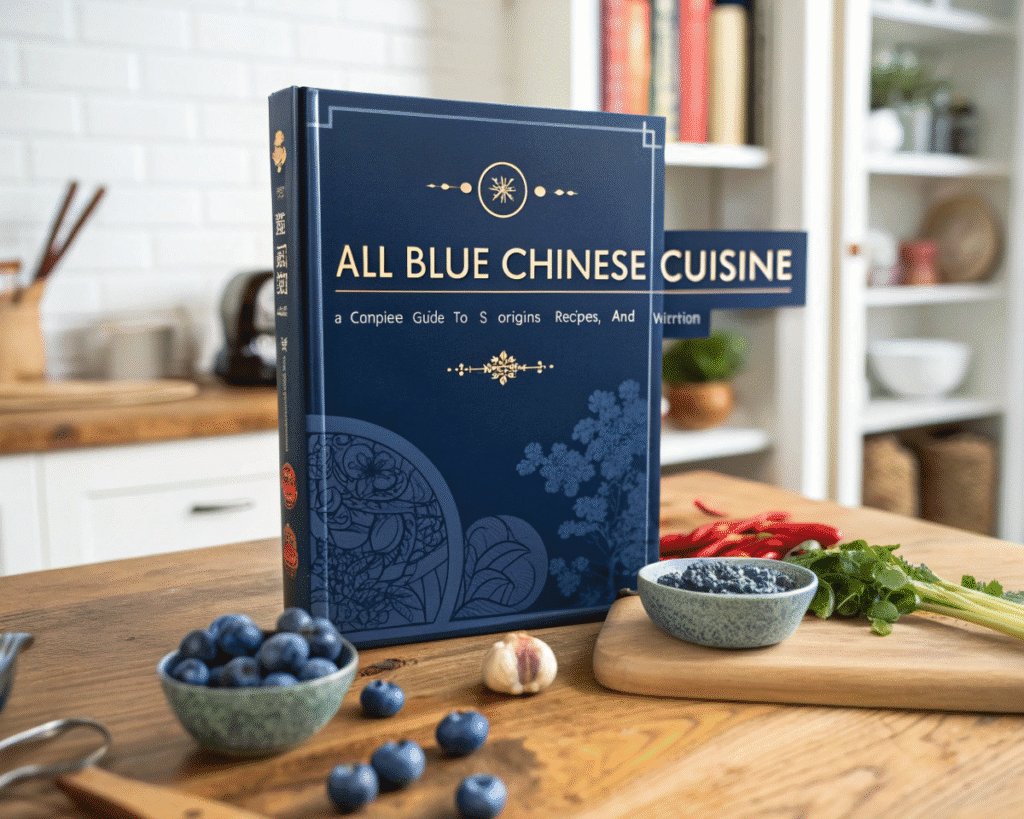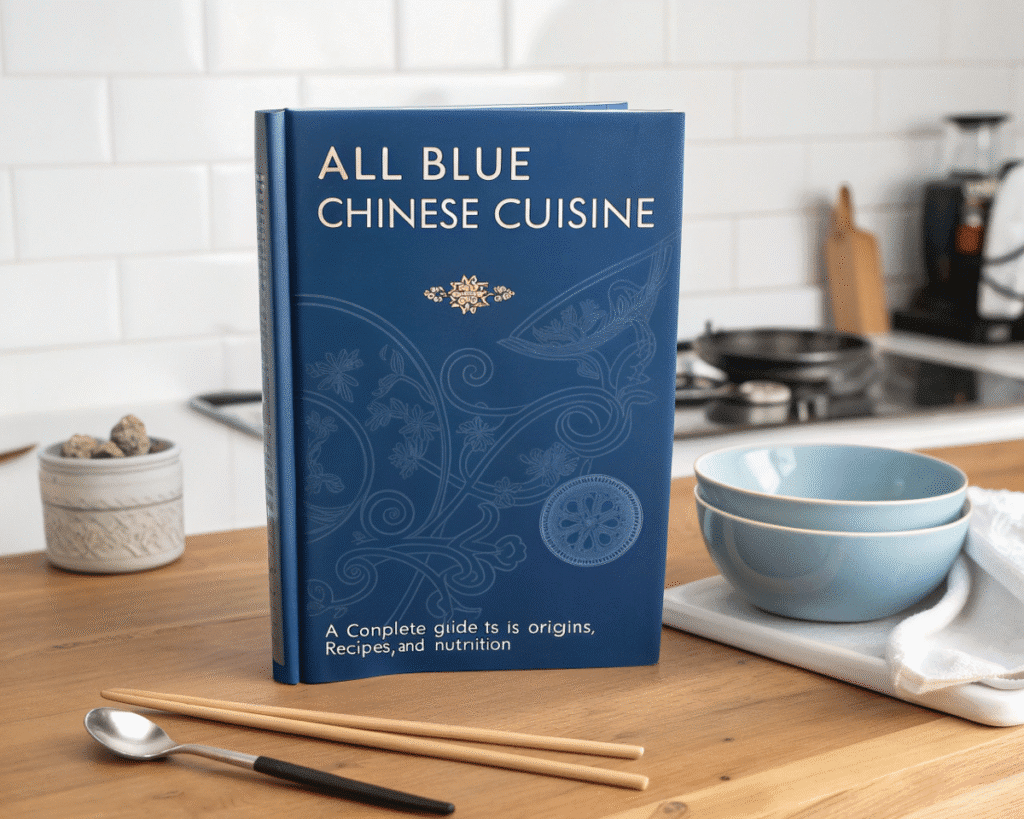
All Blue Chinese Cuisine captivates food lovers with its bold flavors, vibrant presentation, and rich cultural roots. This unique style, often associated with Szechuan (Sichuan) cuisine, stands out for its fiery spices, mouth-numbing sensations, and hearty dishes. In this comprehensive guide, we explore the origins of All Blue Chinese Cuisine, share authentic recipes, break down its nutritional values, and provide essential insights for enthusiasts and home cooks. Whether you’re craving spicy Sichuan noodles or curious about its health benefits, this article covers everything you need to know about All Blue Chinese Cuisine.
What Is All Blue Chinese Cuisine?
All Blue Chinese Cuisine refers to a modern interpretation of Szechuan cuisine, known for its intense flavors and liberal use of chili oil, Sichuan peppercorns, and aromatic spices. Originating from Sichuan province in southwestern China, this culinary style emphasizes bold, spicy, and numbing sensations, often described as mala (spicy and numbing). The term “All Blue” is inspired by restaurants like 四海江湖菜 All Blue Chinese Cuisine in Edison, NJ, which specialize in authentic Szechuan dishes crafted with care.
Szechuan cuisine, one of China’s Eight Great Cuisines, balances heat, umami, and freshness. All Blue Chinese Cuisine builds on this tradition, incorporating dishes like spicy Sichuan noodles, mapo tofu, and cumin beef, often served in a modern, inviting setting. Its appeal lies in its ability to deliver complex flavors while staying true to its regional roots.
Origins of All Blue Chinese Cuisine
Szechuan cuisine traces its origins to Sichuan province, a region with a history stretching back over 2,000 years. The cuisine developed during the Spring and Autumn period (771–476 B.C.), flourishing during the Tang (618–907) and Song (960–1279) Dynasties due to economic prosperity and cultural exchange. Sichuan’s fertile lands, ample rivers, and humid subtropical climate provided diverse ingredients, from freshwater fish to chili peppers introduced via trade routes.
The bold flavors of Szechuan cuisine stem from its geography and culture. The region’s humid climate encouraged the use of chilies and peppercorns to stimulate appetite and combat dampness. Taoism, prevalent in Sichuan, also influenced the cuisine, emphasizing medicinal diets with minimal condiments to promote health. Dishes like “Ginkgo stewed chicken” reflect this philosophy, blending nutrition with flavor.
All Blue Chinese Cuisine, as a modern representation, emerged in restaurants that aim to preserve Szechuan’s authenticity while adapting to contemporary tastes. Establishments like All Blue Chinese Cuisine in Edison, NJ, highlight traditional dishes such as Sichuan boiled fish and pork ribs with shrimp, served in spacious, welcoming environments. This fusion of tradition and modernity has made All Blue a standout in the global Chinese food scene.
Key Characteristics of All Blue Chinese Cuisine
All Blue Chinese Cuisine is defined by its distinctive features:
- Bold Flavors: The mala sensation, combining spiciness from chilies and a tingling numbness from Sichuan peppercorns, is a hallmark.
- Diverse Ingredients: Freshwater fish, pork, beef, and vegetables like lotus root and pea shoots are staples.
- Cooking Techniques: Stir-frying, steaming, braising, and dry-pot methods preserve flavors and nutrients.
- Heavy Seasoning: Chili oil, garlic, and sauces like soy and oyster enhance dishes, though they can be calorie-dense.
- Cultural Significance: Dishes reflect Sichuan’s history, from Buddhist vegetarian influences to Taoist medicinal principles.
These elements create a cuisine that is both exciting and deeply rooted in tradition, appealing to adventurous eaters and health-conscious diners alike.
How to Make All Blue Chinese Cuisine: Authentic Recipes
Below, we share three authentic All Blue Chinese Cuisine recipes inspired by Szechuan traditions. These dishes are beginner-friendly, use accessible ingredients, and capture the cuisine’s bold flavors.
Recipe 1: Spicy Sichuan Noodles
Ingredients (Serves 4):
- 400g fresh wheat noodles
- 200g ground pork
- 2 tbsp Sichuan peppercorns
- 3 tbsp chili oil
- 2 tbsp soy sauce
- 1 tbsp black vinegar
- 2 tsp sugar
- 3 cloves garlic, minced
- 1-inch ginger, grated
- 2 green onions, chopped
- 1/4 cup roasted peanuts, crushed
- 1 cup bok choy, chopped
Instructions:
- Boil noodles until al dente, about 4–5 minutes. Drain and set aside.
- Toast Sichuan peppercorns in a dry pan over medium heat for 2 minutes. Grind into a fine powder.
- Heat chili oil in a wok over medium-high heat. Add garlic and ginger, stirring for 30 seconds.
- Add ground pork, cooking until browned, about 5 minutes.
- Stir in soy sauce, black vinegar, sugar, and ground peppercorns. Cook for 2 minutes.
- Add bok choy and cook until wilted, about 1 minute.
- Toss noodles in the sauce, ensuring even coating.
- Garnish with green onions and peanuts. Serve hot.
Prep Time: 15 minutes
Cook Time: 10 minutes
Total Time: 25 minutes
Recipe 2: Mapo Tofu
Ingredients (Serves 4):
- 400g soft tofu, cubed
- 150g ground beef
- 2 tbsp doubanjiang (fermented broad bean paste)
- 1 tbsp Sichuan peppercorns
- 2 tbsp chili oil
- 1 tbsp soy sauce
- 1 tsp sugar
- 2 cloves garlic, minced
- 1 tsp ginger, minced
- 1/2 cup chicken broth
- 1 tsp cornstarch mixed with 2 tbsp water
- 2 green onions, chopped

Instructions:
- Toast Sichuan peppercorns in a dry pan for 2 minutes. Grind into a powder.
- Heat chili oil in a wok over medium heat. Add garlic, ginger, and doubanjiang, stirring for 1 minute.
- Add ground beef, cooking until browned, about 4 minutes.
- Stir in soy sauce, sugar, and chicken broth. Bring to a simmer.
- Add tofu cubes, gently stirring to coat. Simmer for 5 minutes.
- Stir in cornstarch slurry to thicken the sauce, about 1 minute.
- Sprinkle with ground peppercorns and green onions. Serve with steamed rice.
Prep Time: 10 minutes
Cook Time: 15 minutes
Total Time: 25 minutes
Recipe 3: Cumin Beef
Ingredients (Serves 4):
- 500g beef sirloin, thinly sliced
- 2 tbsp cumin seeds
- 1 tbsp Sichuan peppercorns
- 2 tbsp chili oil
- 2 tbsp soy sauce
- 1 tbsp Shaoxing wine
- 1 tsp sugar
- 1 red bell pepper, sliced
- 1 onion, sliced
- 3 cloves garlic, minced
- 1-inch ginger, sliced
- 2 green onions, chopped
- 1 tbsp sesame oil
Instructions:
- Marinate beef with soy sauce, Shaoxing wine, and sugar for 15 minutes.
- Toast cumin seeds and Sichuan peppercorns in a dry pan for 2 minutes. Grind coarsely.
- Heat chili oil in a wok over high heat. Add garlic and ginger, stirring for 30 seconds.
- Add beef, stir-frying until browned, about 3–4 minutes.
- Add bell pepper and onion, cooking until softened, about 2 minutes.
- Sprinkle with ground spices and toss to coat.
- Drizzle with sesame oil and garnish with green onions. Serve with rice or noodles.
Prep Time: 20 minutes
Cook Time: 10 minutes
Total Time: 30 minutes
These recipes showcase the fiery, aromatic essence of All Blue Chinese Cuisine, making it easy to recreate at home.
Nutritional Values of All Blue Chinese Cuisine
All Blue Chinese Cuisine, rooted in Szechuan traditions, offers a mix of nutritional benefits and challenges. Below, we break down the nutritional profile of typical dishes, based on available data and general Chinese cuisine nutrition.
General Nutritional Profile
- Calories: A typical serving (100g) of Szechuan dishes like chicken and vegetables contains approximately 105–150 calories, with higher calorie counts for fried or sauce-heavy dishes (e.g., 658 calories per 693g serving of chicken and vegetables).
- Protein: High in protein (7–34g per serving), thanks to ingredients like beef, pork, chicken, and tofu.
- Carbohydrates: Moderate, primarily from rice, noodles, or vegetables (5–28g per 100g). Fried rice and chow mein can be carb-heavy.
- Fats: Varies widely, from 5–45g per serving. Chili oil and sauces contribute to higher fat content, often including saturated fats.
- Vitamins and Minerals: Rich in Vitamin A (25% of DV per 100g) and Vitamin C (13% of DV per 100g) from vegetables like bok choy and bell peppers. Fish-based dishes provide omega-3 fatty acids and vitamin D.
- Sodium: High due to soy sauce, doubanjiang, and other seasonings. Some dishes exceed daily recommended sodium intake.
Health Benefits
- High-Quality Protein: Ingredients like fish and lean meats provide essential amino acids, supporting muscle health and satiety.
- Vegetable-Centric: Szechuan cuisine often emphasizes vegetables, which are rich in fiber, antioxidants, and vitamins, promoting digestion and heart health.
- Medicinal Properties: The “food is medicine” philosophy, rooted in Chinese culinary culture, incorporates ingredients like garlic, ginger, and Sichuan peppercorns, which aid digestion and reduce inflammation.
- Low Sugar: Traditional Szechuan dishes avoid refined sugars, helping maintain stable blood sugar levels.
Nutritional Challenges
- High Sodium: Heavy use of soy sauce and fermented pastes can lead to excessive sodium intake, increasing risks of hypertension.
- Calorie-Dense Sauces: Chili oil and thick sauces add calories and unhealthy fats, especially in fried dishes.
- MSG Concerns: Some dishes use MSG, which may cause adverse reactions in sensitive individuals if consumed regularly.
Tips for Healthier All Blue Chinese Cuisine
- Choose steamed or stir-fried dishes over deep-fried options.
- Request sauces on the side to control calorie and sodium intake.
- Opt for vegetable-heavy dishes like steamed vegetable dumplings (144 calories per 100g).
- Pair with green tea, which aids digestion and provides antioxidants.
Cultural Significance of All Blue Chinese Cuisine
All Blue Chinese Cuisine reflects Sichuan’s rich cultural tapestry. The cuisine’s emphasis on mala flavors ties to the region’s climate, where spicy foods counteract humidity. Buddhist and Taoist influences promote balanced, health-conscious dishes, such as vegetarian banquets and medicinal stews. Festivals like Chinese New Year feature symbolic dishes, such as steamed fish for abundance, which are staples in All Blue’s repertoire.
Restaurants like All Blue Chinese Cuisine in Edison, NJ, bring this heritage to global audiences, offering dishes that honor tradition while embracing modern dining preferences. The spacious, welcoming ambiance of such establishments enhances the cultural experience, making it a hub for families and food enthusiasts.
Tips for Enjoying All Blue Chinese Cuisine
- Explore Variety: Try a mix of spicy and mild dishes, like Sichuan boiled fish and steamed vegetable dumplings, to appreciate the cuisine’s range.
- Pair with Staples: Serve dishes with steamed rice or noodles to balance flavors and add carbohydrates.
- Adjust Spice Levels: If sensitive to heat, request less chili oil or Sichuan peppercorns.
- Visit Authentic Restaurants: Seek out places like All Blue Chinese Cuisine in Edison, NJ, for an authentic experience.
- Experiment at Home: Use fresh ingredients and authentic seasonings like doubanjiang to replicate Szechuan flavors.
Where to Experience All Blue Chinese Cuisine
For an authentic taste, visit restaurants specializing in Szechuan cuisine. All Blue Chinese Cuisine in Edison, NJ, located at 561 US Highway 1, is a prime example. Known for its spicy Sichuan noodles, chicken with taro stew, and cumin beef, the restaurant offers a modern ambiance with ample parking and friendly service. Other notable spots include Blue Orchid Chinese Cuisine in Westwood, which uses fresh, local ingredients for dishes like handmade prawn dumplings.
If dining out isn’t an option, online retailers like Fine Food Specialist offer premium Szechuan ingredients, such as dumpling wrappers and chili oil, to recreate dishes at home. Websites like AllRecipes also provide Szechuan-inspired recipes for home cooks.
All Blue Chinese Cuisine, rooted in Szechuan traditions, offers a thrilling culinary experience with its bold flavors, diverse ingredients, and cultural depth. Originating from Sichuan province, this cuisine blends history, health, and heat, making it a favorite among food lovers. With our recipes for spicy Sichuan noodles, mapo tofu, and cumin beef, you can bring these vibrant dishes to your kitchen. Nutritionally, it provides protein, vitamins, and antioxidants, though moderation is key due to high sodium and fat content in some dishes. Whether dining at All Blue Chinese Cuisine in Edison, NJ, or cooking at home, this cuisine promises an unforgettable journey of taste and tradition.

